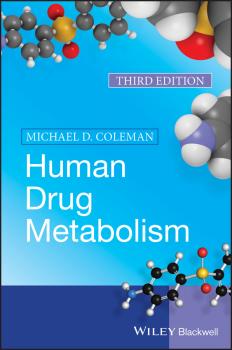ТОП просматриваемых книг сайта:
Michael Coleman D.
Список книг автора Michael Coleman D.Аннотация
Provides a timely update to a key textbook on human drug metabolism The third edition of this comprehensive book covers basic concepts of teaching drug metabolism, starting from extreme clinical consequences to systems and mechanisms and toxicity. It provides an invaluable introduction to the core areas of pharmacology and examines recent progress and advances in this fast moving field and its clinical impact. Human Drug Metabolism, 3rd Edition begins by covering basic concepts such as clearance and bioavailability, and looks at the evolution of biotransformation, and how drugs fit into this carefully managed biological environment. More information on how cytochrome P450s function and how they are modulated at the sub-cellular level is offered in this new edition. The book also introduces helpful concepts for those struggling with the relationship of pharmacology to physiology, as well as the inhibition of biotransformational activity. Recent advances in knowledge of a number of other metabolizing systems are covered, including glucuronidation and sulphation, along with the main drug transporters. Also, themes from the last edition are developed in an attempt to chart the progress of personalized medicine from concepts towards practical inclusion in routine therapeutics. The last chapter focuses on our understanding of how and why drugs injure us, both in predictable and unpredictable ways. Appendix A highlights some practical approaches employed in both drug metabolism research and drug discovery, whilst Appendix B outlines the metabolism of some drugs of abuse. Appendix C advises on formal examination preparation and Appendix D lists some substrates, inducers and inhibitors of the major human cytochrome P450s. Fully updated to reflect advances in the scientific field of drug metabolism and its clinical impact Reflects refinements in the author's teaching method, particularly with respect to helping students understand biological systems and how they operate Illustrates the growing relationship between drug metabolism and personalized medicine Includes recent developments in drug discovery, genomics, and stem cell technologies Human Drug Metabolism, 3rd Edition is an excellent book for advanced undergraduate and graduate students in molecular biology, biochemistry, pharmacology, pharmacy, and toxicology. It will also appeal to professionals interested in an introduction to this field, or who want to learn more about these bench-to-bedside topics to apply it to their practice.
Аннотация
Every year throughout the world, individuals’ health is damaged by their exposure to toxic chemicals at work. In most cases these problems will resolve, but many will sustain permanent damage. Whilst any justified claim for compensation requires medical and legal evidence a crucial and often controversial component of this process is the establishment of a causal link between the individual’s condition and exposure to a specific chemical or substance. Causation, in terms of how a substance or substances led the claimant to his or her current plight, can be difficult to establish and the main purpose of this book, is to provide the aspiring expert report writer with a concise, practical guide that uses case histories to illuminate the process of establishing causation in occupational toxicity proceedings. In summary: A practical, accessible guide to the preparation of balanced, scientifically sound expert reports in the context of occupational toxicology. Focuses on the scientist’s role in establishing a causal link between exposure to toxins and an individual’s ill health. Includes real-life case histories drawn from the Author’s 15 years experience in this area to illustrate the principles involved. Expert Report Writing in Toxicology: Forensic, Scientific and Legal Aspects proves invaluable to scientists across a range of disciplines needing guidance as to what is expected of them in terms of the best use of their expertise and how to present their findings in a manner that is authoritative, balanced and informative.


